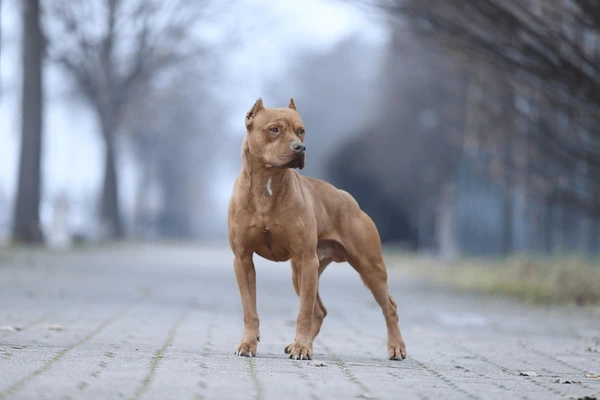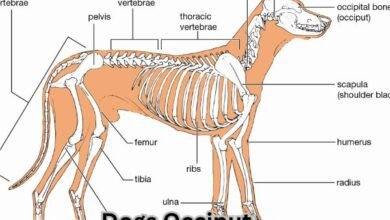
How can I build muscle on my Pit Bull? Many dog owners wonder how to help their Pit Bull build muscle safely. The key is a balanced approach—feed a high-protein diet, include strength exercises like tug-of-war and weight pulling, and ensure regular cardio. Always prioritize safety, avoid overexertion, and consult your vet for personalized advice!
In this article, we’ll explore Pit Bull Muscle and how to build muscle on your Pit Bull, including effective workout routines, nutritional tips, potential health risks, expert veterinary insights, and safe practices to keep your pup strong and healthy.
Understanding PitBull Muscle Development
Pit Bulls are naturally muscular dogs, thanks to their genetics and working-dog heritage. However, every dog is different—some Pit Bulls may bulk up easily, while others need a bit more help. Knowing what to expect as your dog grows can help you support healthy Pit Bull muscle development at every stage.
- Puppy Stage: Focus on building a strong foundation. At this age, your puppy needs balanced nutrition and light play-based exercises to develop coordination and strength. Avoid intense workouts, as their bones and joints are still developing.
- Adolescent Stage: This is when your Pit Bull will start to fill out. Introduce more structured strength exercises and maintain a nutrient-rich diet.
- Adult Stage: Your dog is now ready for full-on muscle-building exercises. Consistency in diet and training is crucial to maintaining and enhancing Pit Bull muscle.
- Senior Stage: Even as your Pit Bull ages, keeping muscles strong is important. Opt for low-impact exercises to maintain muscle mass while being gentle on joints.
The Best Diet for Building PitBull Muscle
You’ve heard it before—abs (and muscles) are made in the kitchen! For Pit Bull muscle growth, diet plays a massive role. Your dog needs a high-protein diet to support muscle repair and growth, along with healthy fats and essential vitamins.
What to Include in Your Pit Bull’s Diet:
- High-Quality Protein: Lean meats like chicken, turkey, beef, and fish are great for muscle building. Protein is essential for muscle repair and development.
- Healthy Fats: Include sources of Omega-3 and Omega-6 fatty acids, such as fish oil, flaxseed, and chicken fat, to support joint health and energy.
- Complex Carbohydrates: Brown rice, sweet potatoes, and oats provide sustained energy for those muscle-building workouts.
- Vitamins and Minerals: A balanced diet with fruits and vegetables ensures your Pit Bull gets the nutrients needed for overall health.
Supplements to Consider:
- Glucosamine and Chondroitin: These support joint health, especially for active and muscular dogs.
- Fish Oil: Helps reduce inflammation and keeps your dog’s coat shiny.
- Protein Supplements: If recommended by your vet, protein powders designed for dogs can help boost Pit Bull muscle growth.
Top Exercises for Building PitBull Muscle
Exercise is just as important as diet when it comes to PitBull muscle development. The key is a balanced routine that combines strength training, cardio, and mental stimulation.
Strength-Building Workouts:
- Tug-of-War: A safe and fun way to strengthen neck, shoulder, and leg muscles.
- Weight Pulling: Attach a weighted harness (start light!) and let your dog pull it during walks to build strength.
- Flirt Pole: This toy encourages jumping and quick sprints, boosting muscle and agility.
- Spring Pole: It engages your dog’s bite strength and upper body muscles, perfect for PitBull muscle gains.
Cardio for Endurance:
- Daily Walks and Runs: These keep your dog’s heart healthy and help maintain lean muscle.
- Swimming: A low-impact workout that’s excellent for muscle development and joint care.
- Hiking: Builds endurance and strengthens muscles through natural resistance.
Mental and Physical Stimulation:
Keeping your Pit Bull mentally engaged is just as important as physical exercise. Puzzle toys, obedience training, and agility courses can keep your dog sharp and reduce the risk of boredom-related behavior.
Safety Tips for PitBull Muscle Training
When focusing on Pit Bull muscle growth, safety should always come first. Overexertion can lead to injuries, and intense training without proper preparation can harm your dog’s health.
How to Train Safely:
- Warm-Up First: Start with light exercises before moving on to strength training.
- Monitor Your Dog: Watch for signs of fatigue or discomfort. Limping, excessive panting, or reluctance to move can indicate a problem.
- Avoid Overtraining: Like humans, dogs need rest days to allow their muscles to recover and grow.
- Stay Hydrated: Make sure your dog has access to fresh water, especially during and after workouts.
- Consult Your Vet: Before starting a new exercise or diet regimen, always get your vet’s approval.
Common Pit Bull Muscle-Building Mistakes to Avoid
Building PitBull muscle isn’t just about heavy workouts and high-protein meals. Avoiding common mistakes can help you achieve better and safer results.
- Skipping Rest Days: Muscles need time to recover and grow.
- Unbalanced Diets: Overfeeding protein while neglecting other nutrients can harm your dog’s health.
- Pushing Too Hard: Start slowly, especially with puppies and older dogs.
- Ignoring Joint Health: High-impact exercises can strain your dog’s joints. Consider joint supplements and low-impact workouts like swimming.
- Not Adjusting as They Age: Your dog’s exercise and diet needs will change as they mature—adapt accordingly.
When to Consult Your Vet
Your vet is a key partner in ensuring your Pit Bull builds muscle safely. If you notice any signs of discomfort, sudden changes in weight, or if you’re unsure about certain exercises or diets, reach out to your vet. They can provide personalized advice based on your dog’s specific needs and health status.
Final Thoughts: Building Strong and Healthy Pit Bull Muscle
Helping your Pit Bull build muscle is all about balance—between diet, exercise, and rest. With a consistent routine, a high-quality diet, and lots of love, your dog can achieve a strong, healthy, and happy life. Remember, safety always comes first, so monitor your dog’s progress and adapt your approach as needed.
By following these tips and focusing on gradual, healthy Pit Bull muscle development, you’ll not only enhance your dog’s strength and physique but also boost their overall well-being and happiness. Keep up the great work, and enjoy every step of the journey with your strong and healthy Pit Bull!
How can I safely build muscle in my Pit Bull?
To safely build Pit Bull muscle, combine strength exercises like tug-of-war, hill climbing, and weight pulling with a high-protein diet. Provide rest days for recovery, ensure proper hydration, and avoid overtraining. Always monitor your dog’s energy levels and adjust workouts accordingly.
What is the best diet for Pit Bull muscle growth?
A muscle-building diet for Pit Bulls should include lean meats (chicken, beef, fish), healthy fats, and complex carbohydrates like sweet potatoes. High-protein kibble combined with fresh, natural ingredients fuels muscle growth, while Omega-3s from fish oil support recovery and joint health.
How much exercise does a Pit Bull need for muscle development?
Pit Bulls need at least 60-90 minutes of exercise daily, including a mix of strength training, cardio, and agility work. Structured workouts 3-5 times per week help build muscle while preventing overexertion. Balance high-intensity training with active rest days to maintain strength and endurance.
Can Pit Bulls naturally build muscle without intense training?
Yes, Pit Bulls have a naturally muscular build, but structured exercise enhances definition and strength. Even without intense training, daily walks, playtime, and proper nutrition help maintain Pit Bull muscle while preventing weight gain and supporting overall health.
How do I prevent injuries while training my Pit Bull?
To prevent injuries, warm up before workouts, use proper training gear, and avoid repetitive high-impact exercises. Provide joint-supporting supplements like glucosamine, ensure rest days for muscle recovery, and monitor for signs of fatigue or discomfort. Always start slow and increase intensity gradually.



